Chances are that if you’ve heard of Sable Island, you’ve also heard of Sable Island horses. There are about 500 wild and free horses on this remote island off the coast of Nova Scotia. There are many reasons to visit Sable Island, see 6 Fascinating Facts about Sable Island, but the iconic horses are surely the main attraction.

Our first glimpse of Sable Island horses was from the helicopter as we approached.
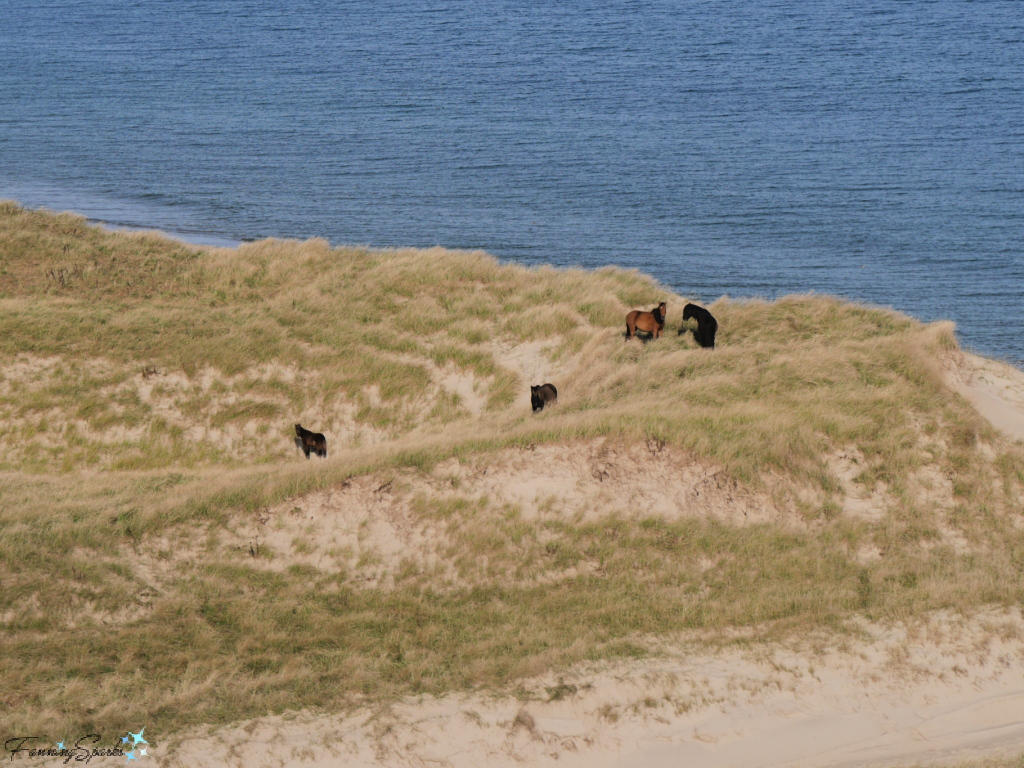
Generally, Sable Island horses live in small family bands. “Band structure is variable, but most often consists of one dominant stallion, one or more mares and their offspring, and occasionally one or 2 subordinate mature males. Average band size is usually 4-8, though bands of 10 and 12 individuals are not uncommon. Males that are not in family bands form loosely organized “bachelor” groups, or, particularly if they are older, live as solitary stallions.” explains the Canadian Encyclopedia.
This is the same band of horses viewed from the ground. They were unfazed by the landing of the helicopter and the subsequent human activity.
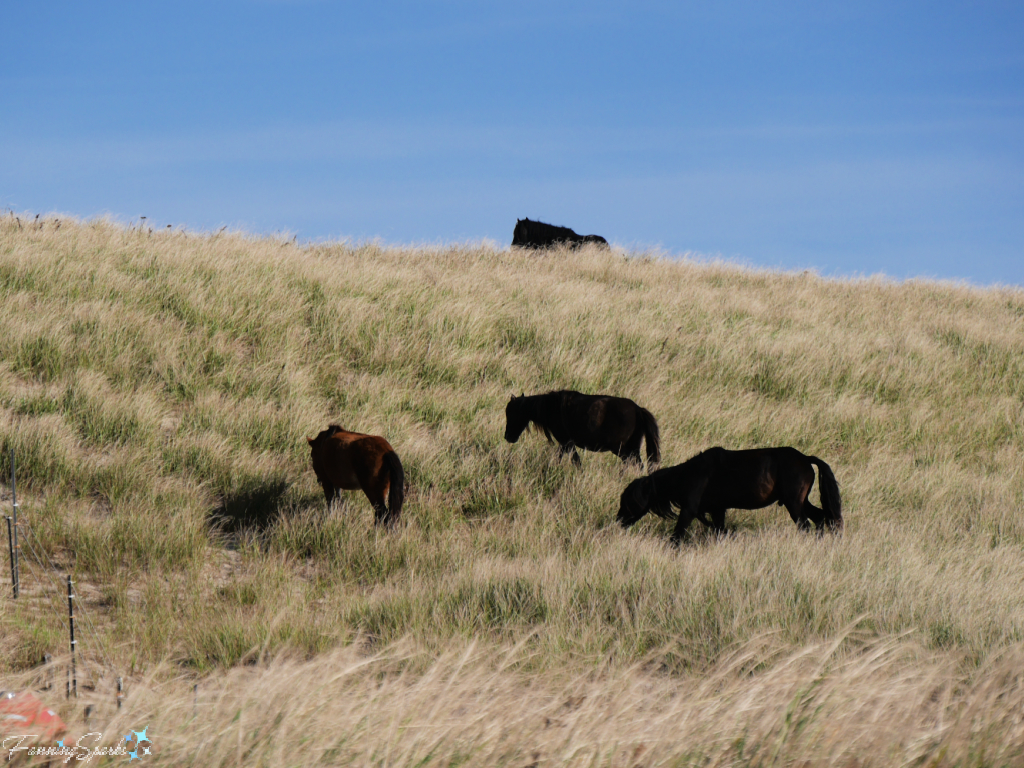
We spent the day hiking around Sable and had several sightings of the beloved horses. Our first destination was the Mummichog Ponds area, a well-used watering area, towards the west end of the island. We were not disappointed—two horses were standing in the shallow pond—their beautiful reddish-brown coats in perfect harmony with the surrounding vegetation.
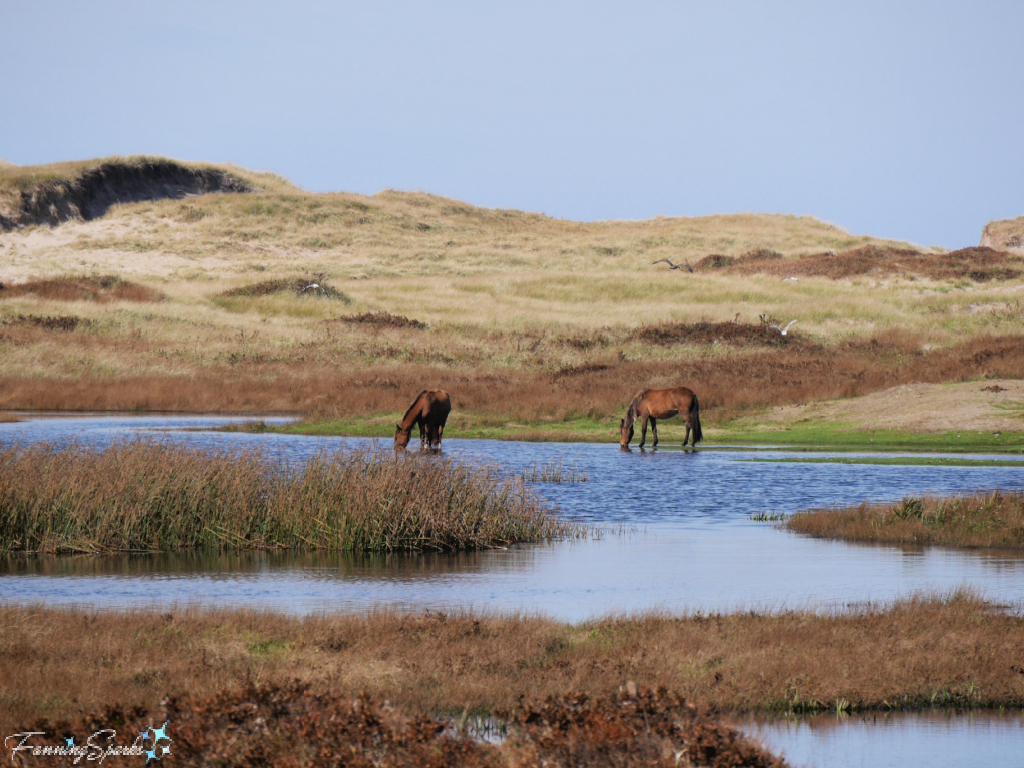
We were able to approach without alarming the horses. Of course, we stayed at least 20 meters (66 feet or 10 horse-lengths) away from all wildlife on the Island as required by the National Park Reserve.
The Sable Island horses are considered a wild population of a naturalized species—”an animal in its present habitat for more than 50 years”—and are protected by Canada Parks. “The Sable Island horses are protected from hunting, harm, and disturbance, they do not receive veterinary care and people are not allowed to touch, feed or otherwise interact with the horses.” states the Parks Canada website.

Switching to my 100-300 telephoto zoom lens afforded an even closer look.
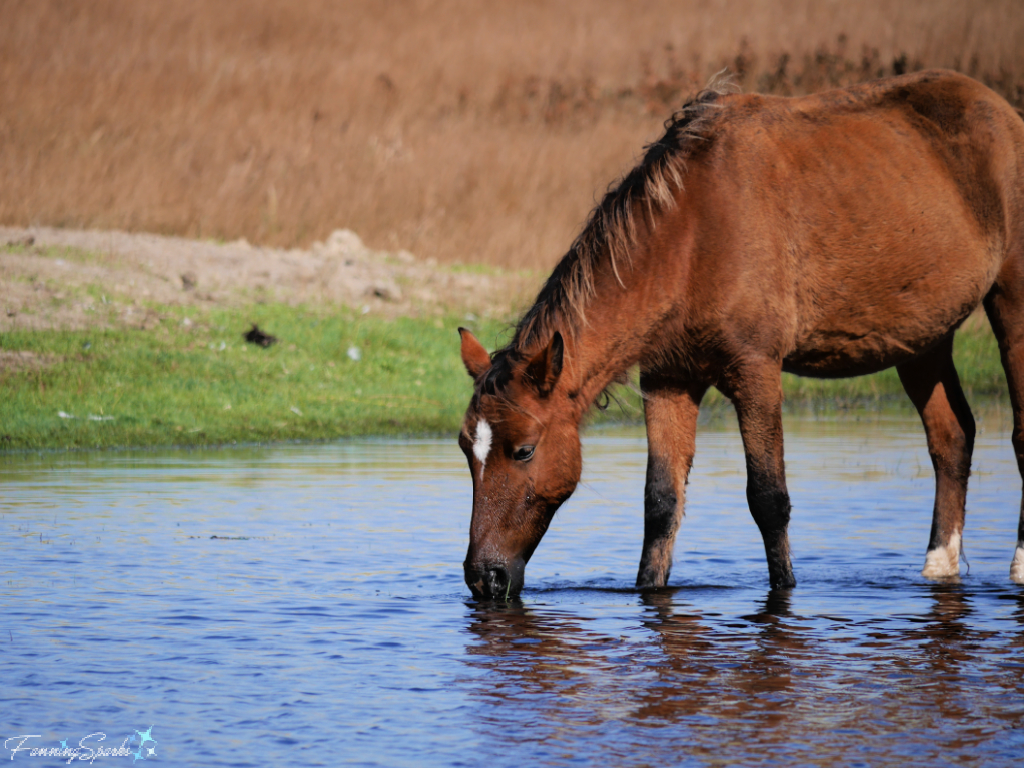
At first it appeared as if this mare was drinking water but, then it became apparent, she was eating the vegetation in the pond.
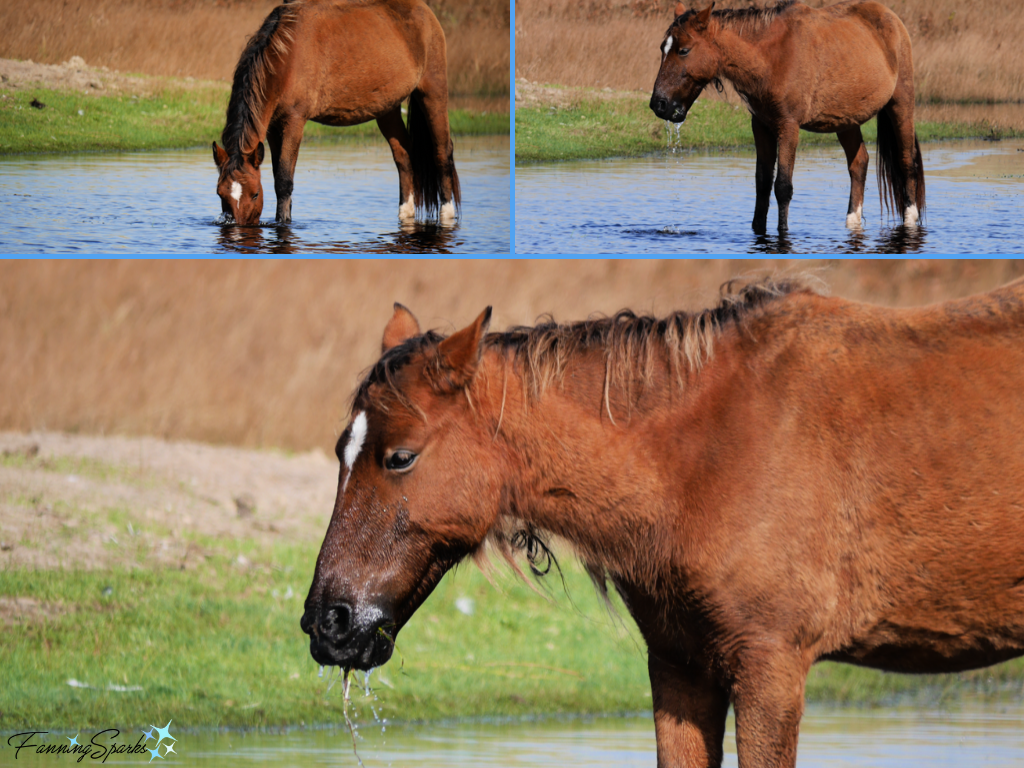
For the most part, the Sable Island horses eat beach grass, ie marram grass (Ammophila breviligulata), which covers about one third of the Island. According to Wikipedia, “Older horses often die of starvation after their teeth are worn down by a lifetime of exposure to sand and marram, a tough grass.”
While the mare contentedly ignored us, she did look up to check out a stallion as he approached.
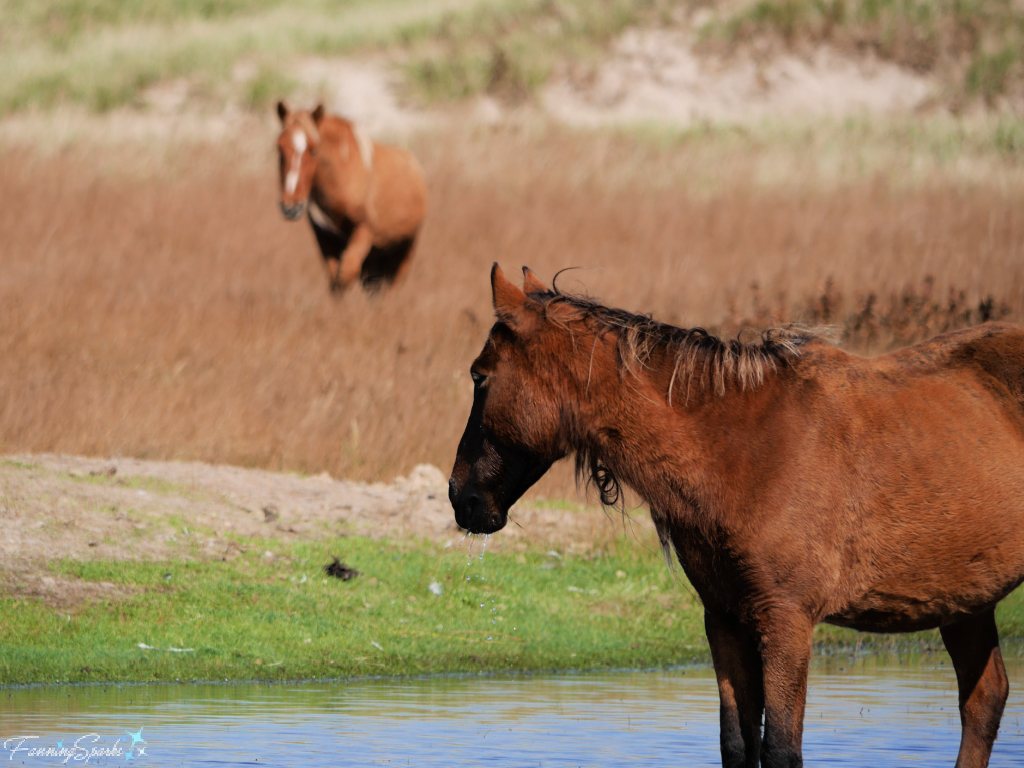
Then she got back to the business of eating while the stallion grazed nearby.
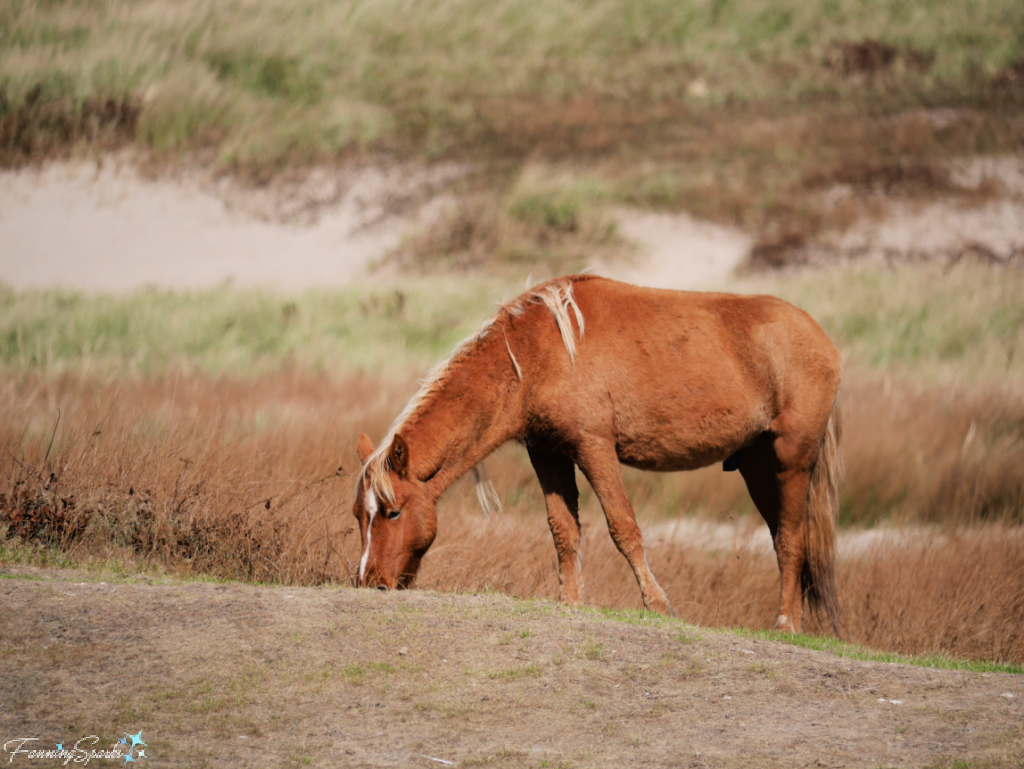
It was easy to see the mare’s rich reddish-brown hair coat from our vantage point. The horses will grow thick coats to protect them through the winter. They shed their winter coats in the early summer around June. “When the Sable horses do begin to shed, the adult males are generally the first to lose the long coat hair, while some of the youngest of the horses can look raggedy and scruffy well into July”, explains Zoe Lucas on the Sable Island Institute StoryMap.
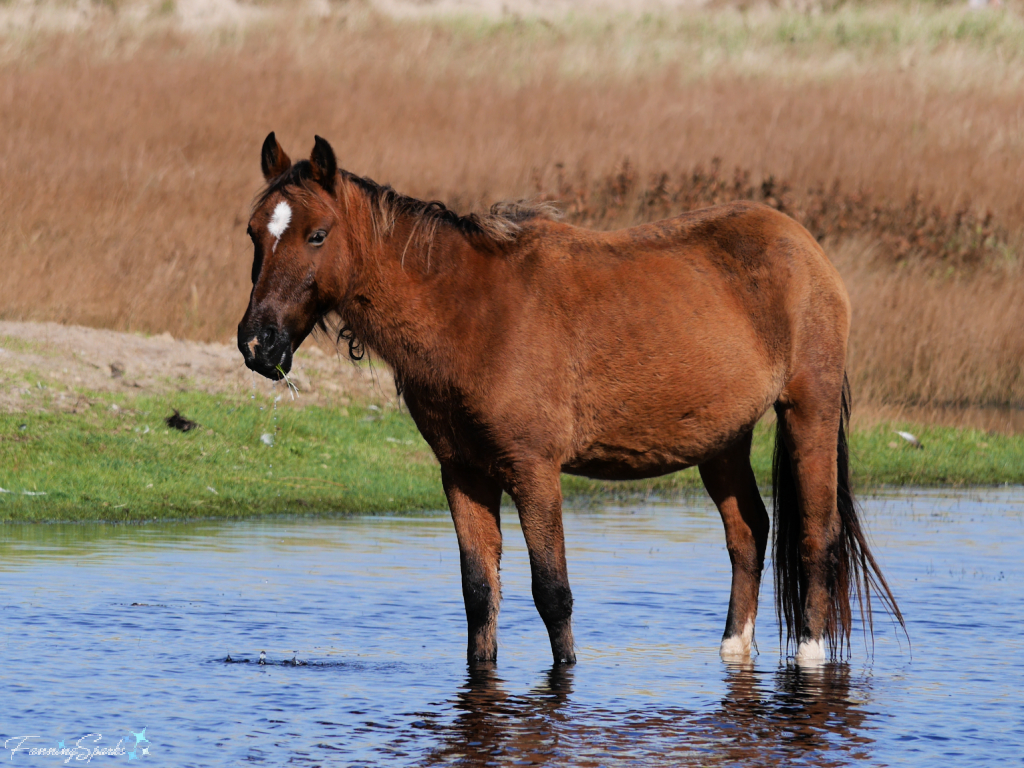
Then we spotted this little charmer! I don’t know how old this foal is but I’d guess it was born this year. Parks Canada says “The number of horse births and deaths varies from year to year, with an average of 76 foals born each year, usually in late spring, and 64 horse deaths per year.”
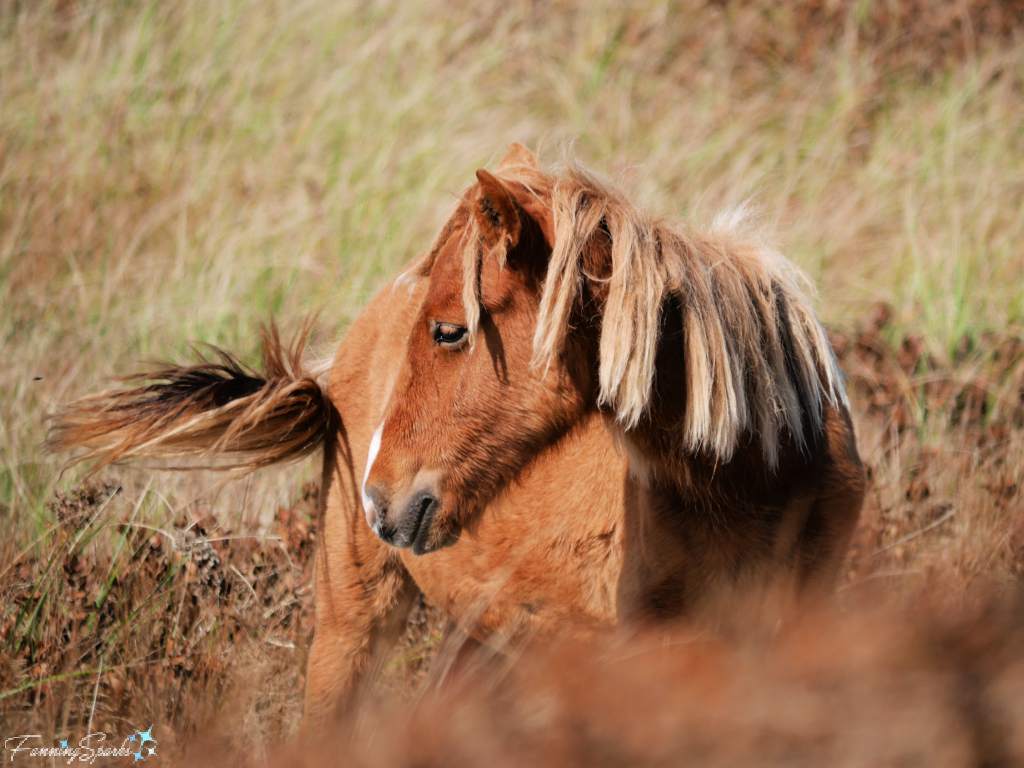
I could have photographed this subject all day…
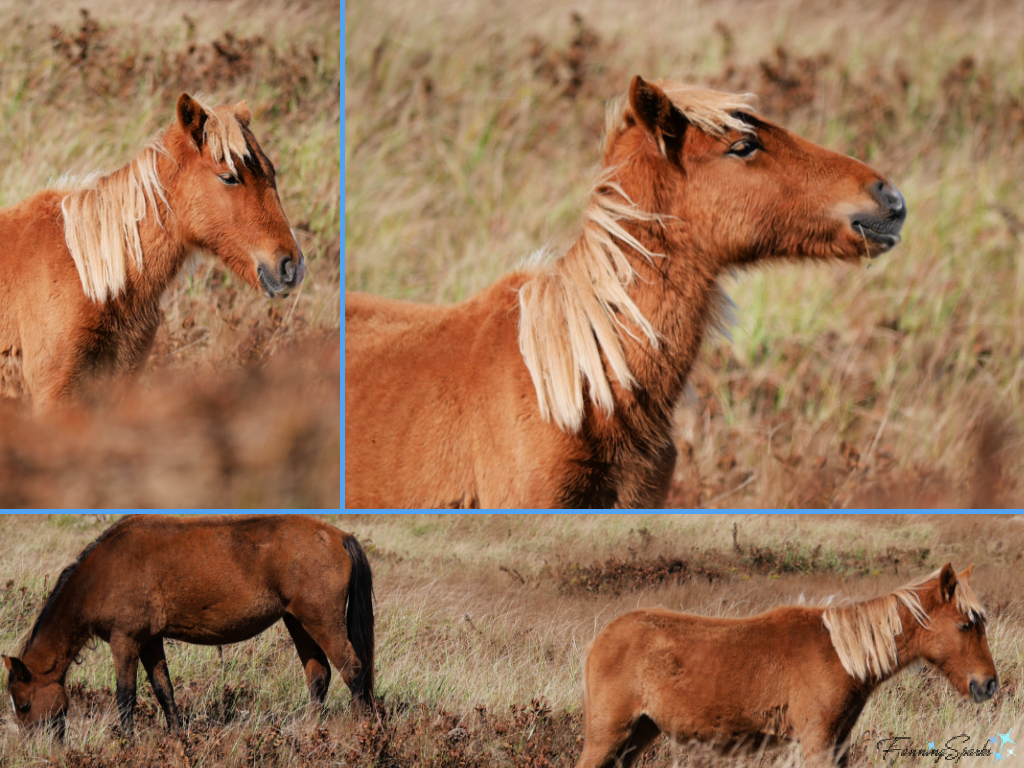
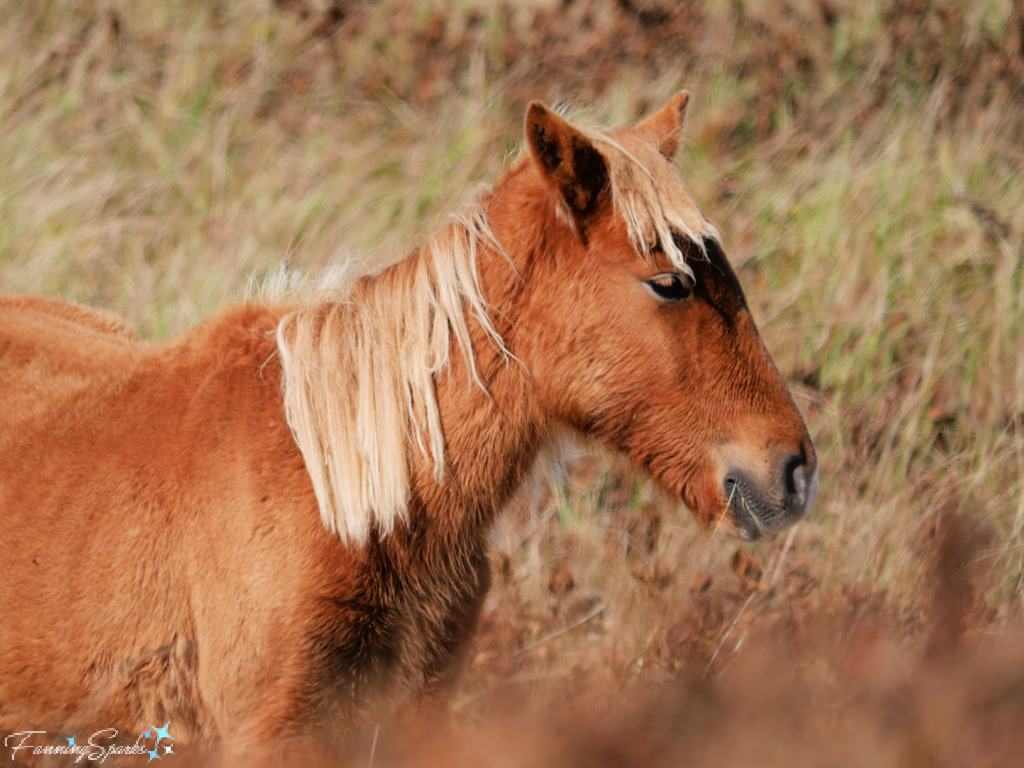
…but soon it was time to move on.
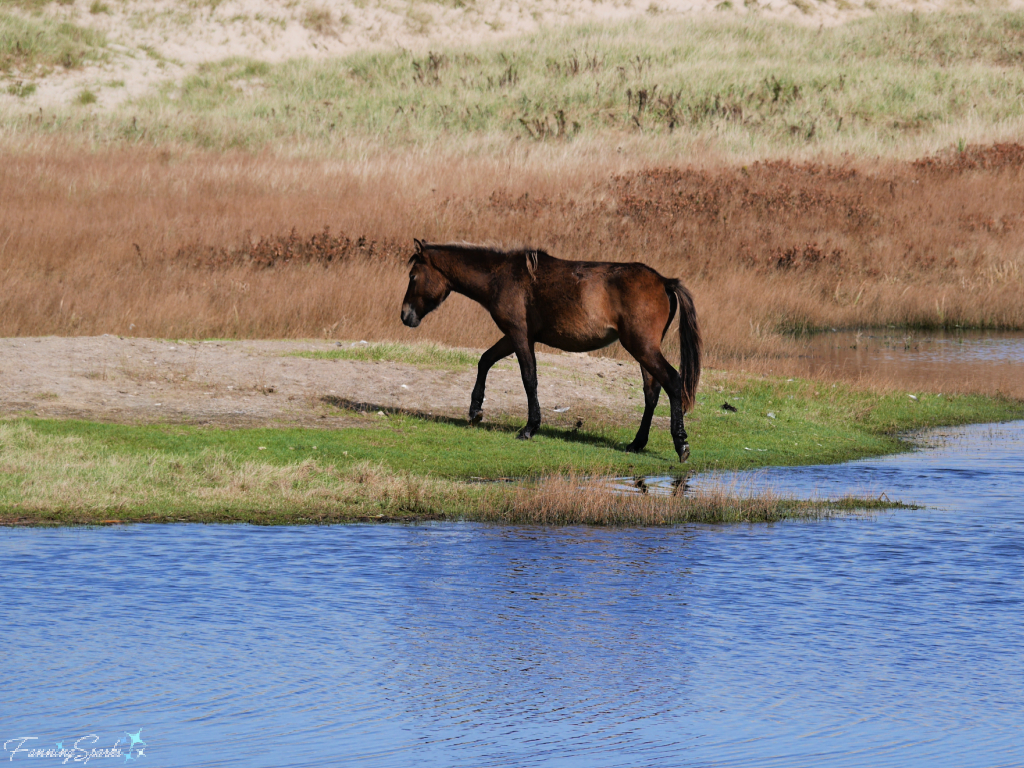
Our second hiking destination was an A-Frame structure towards the east end of the island. Much to our surprise, evidence of the 1971 Dalhousie University A-frame research building had pretty much disappeared after Hurricane Fiona.
Speaking of history, there has been much speculation about how the horses came to be on this wild remote island. One popular theory was that they arrived from shipwrecked vessels. But according to a 2014 CBC news article, “The horses on Sable Island today are most likely descendants of animals that were seized by the British from the Acadians during their expulsion from Nova Scotia in the late 1750s and 1760s. Thomas Hancock, a Boston merchant and shipowner, was paid to transport the Acadians to the American colonies. Hancock either bought or helped himself to some of the horses abandoned by the Acadians and is thought to have transported the horses to Sable Island along with cows, sheep, goats and hogs. … They were introduced to the island and the idea was that the horses would take care of themselves, they would reproduce, their numbers would build up and periodically they could be harvested and sold at a profit”.
For more information about the Acadians and their tragic history, check out my previous post The Enduring Tale of Evangeline. As quoted in the blog post, the Acadians were told “your Land & Tennements, Cattle of all Kinds and Livestocks of all Sorts are forfeited to the Crown”. Today’s Sable Island horses may very well have descended from the “livestocks” that were seized.
We may not have found the A-Frame structure but we did spot a second family band of horses during this hike.
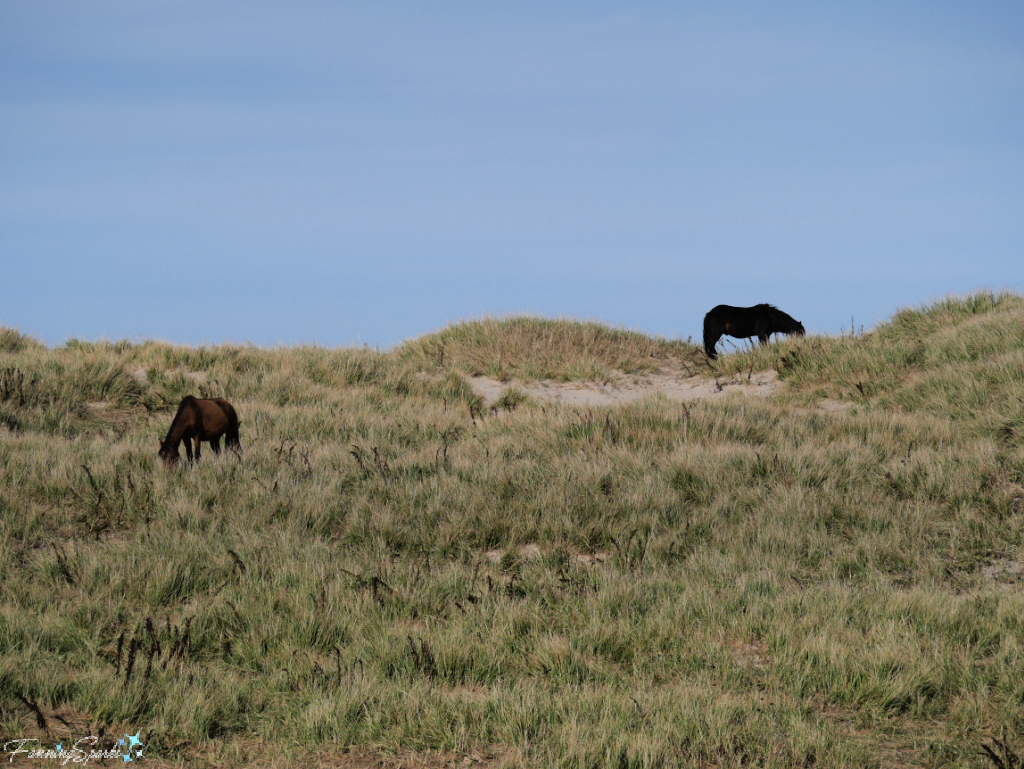
It took some effort to reach these horses after we first spotted them. Sable Island may appear to be flat but some of the sand dunes are quite high (about 30 meters/ 98 feet) resulting in a complex maze of sand-covered hills and valleys. The horses use this landscape to their advantage and shelter in the valleys during storms. The effort to reach them was definitely worth it.
This stallion, also shown at the top of this blog post, was contentedly grazing on the crest of a sand dune.
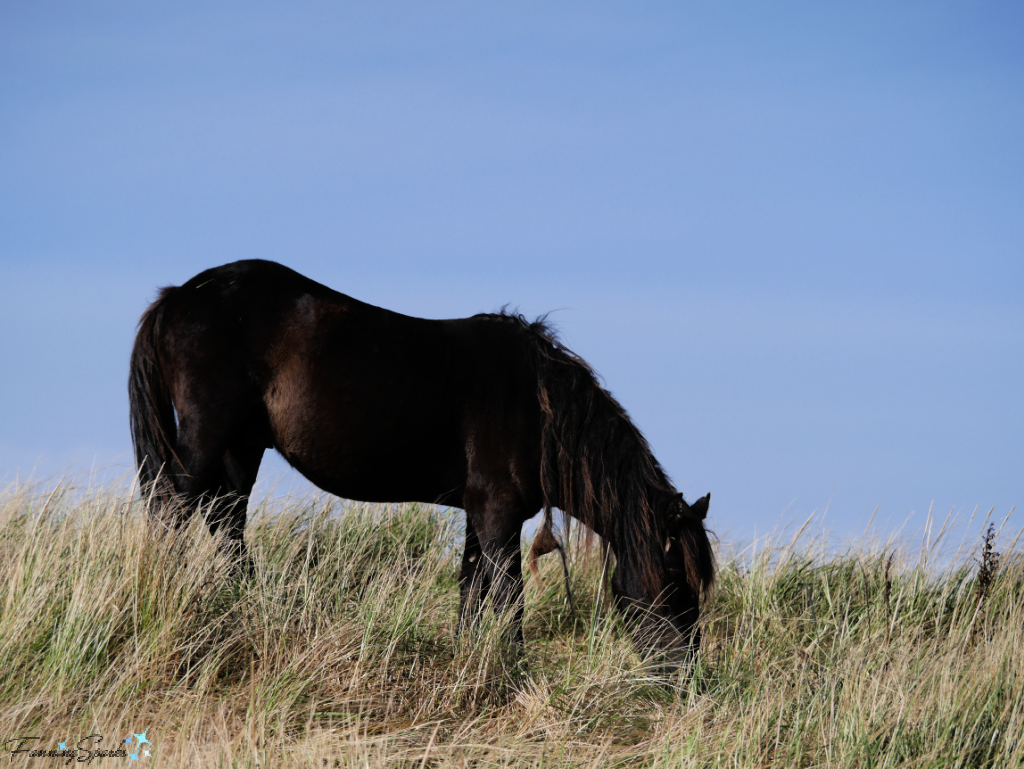
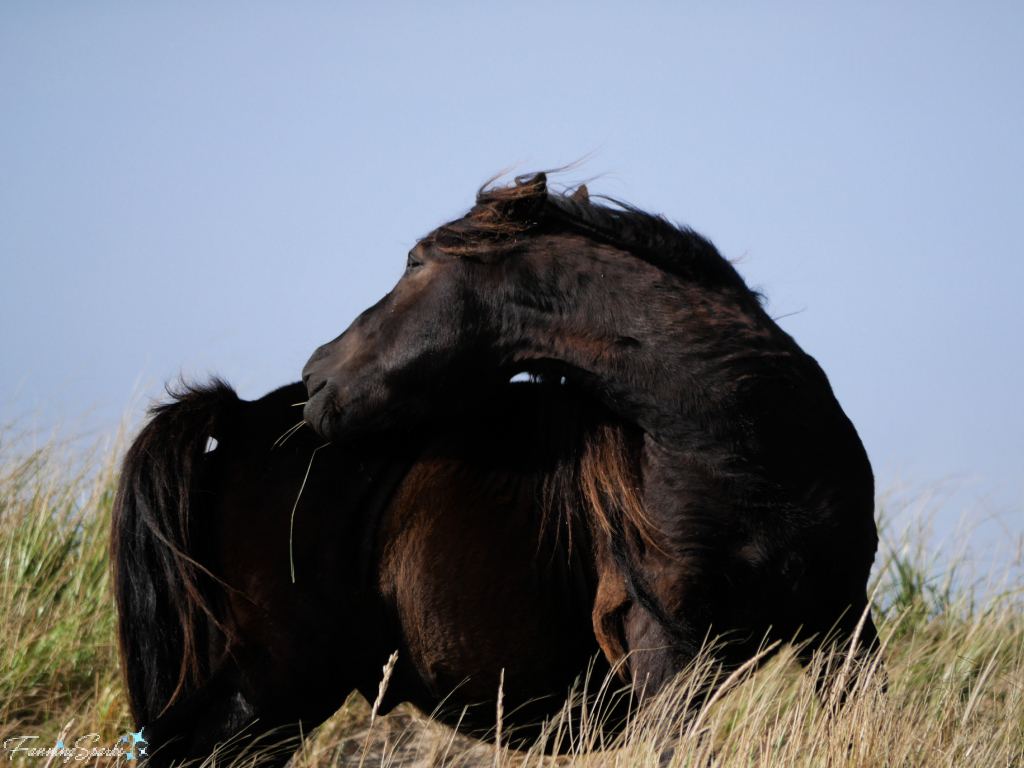
A mare and her foal were grazing nearby.
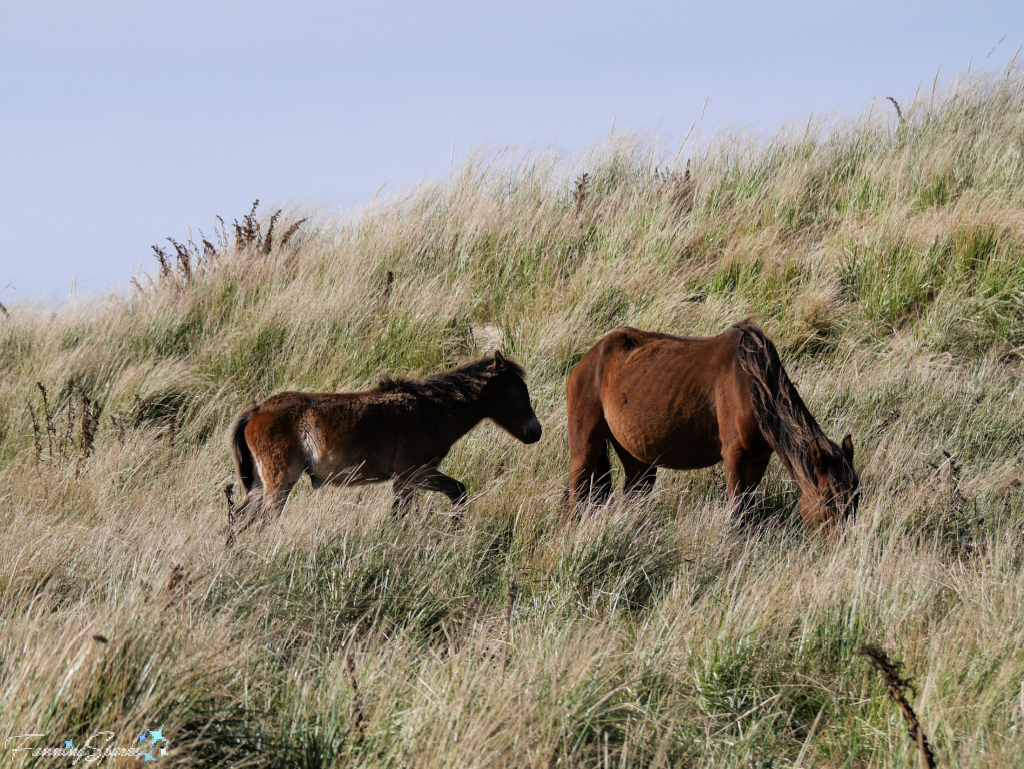
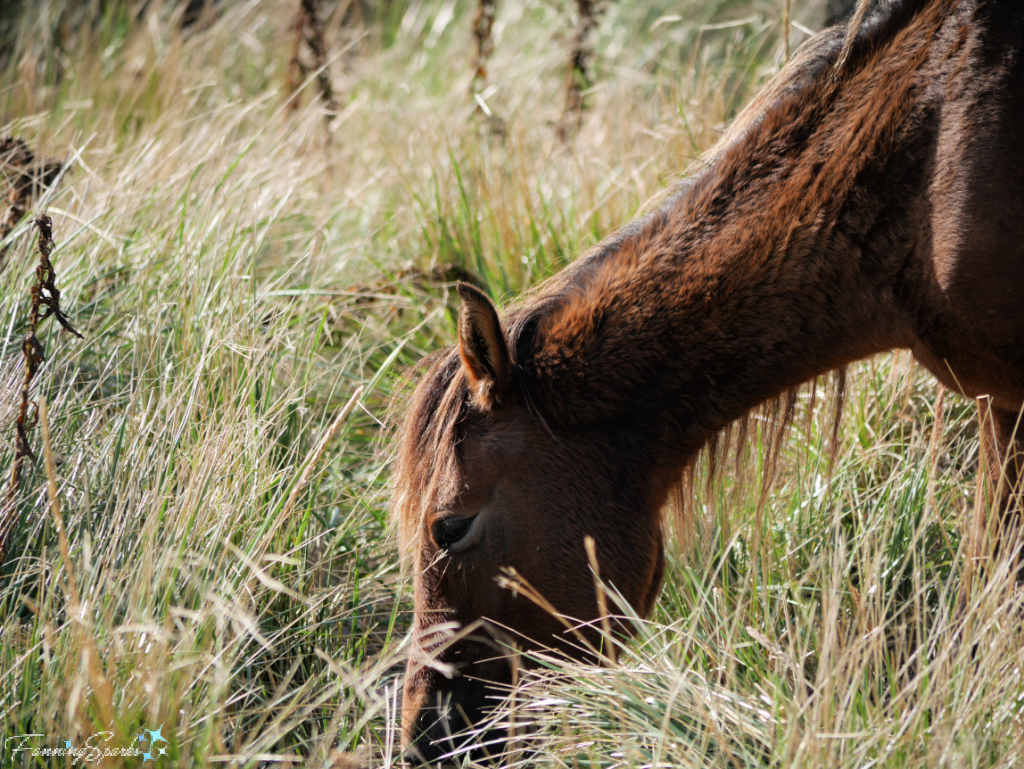
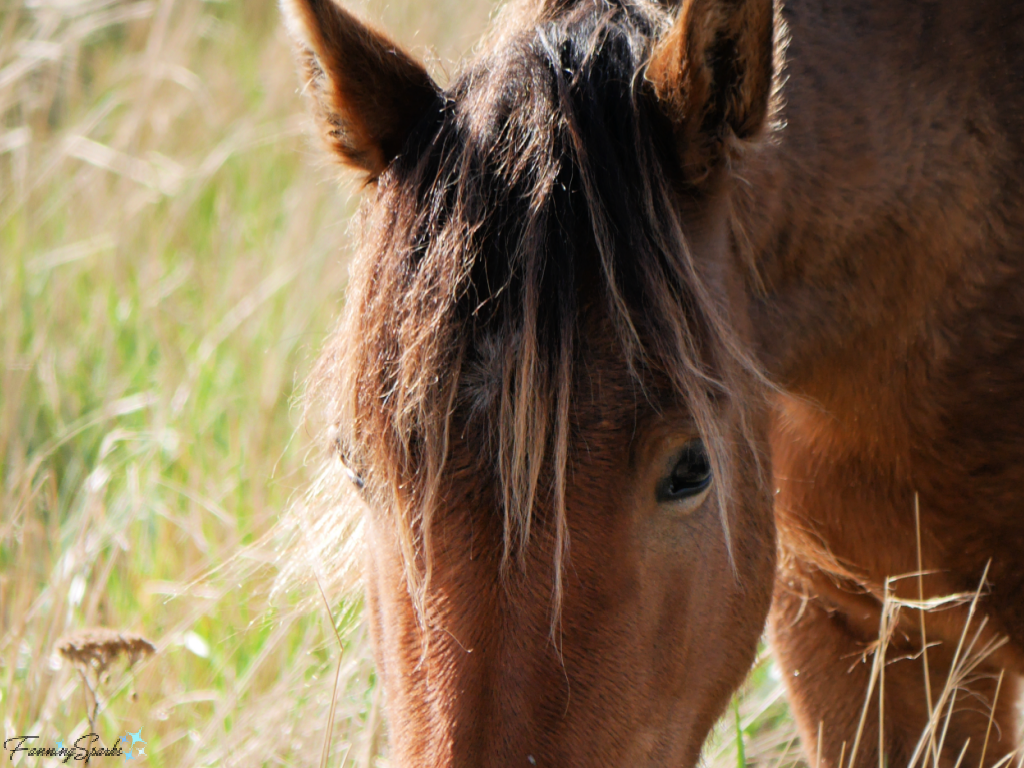
Obviously, horses are not the only wildlife on Sable Island.
“Grey seals are the most common large animal on the island, with large breeding colonies throughout the island for the pupping season of December and January. Up to 50,000 pups can be born in a given year. During the summer, their numbers are reduced but they are still common. Harbour seals are also year-round residents but are less numerous than Grey seals. They breed in May and June. This population is in decline and it is important to avoid disturbing them, either on vehicles or on foot. Seals can bite! Keep your distance, and avoid getting in their way.” explains Parks Canada
We spotted dozens of Grey Seals (Halichoerus grypus) in the waters off Sable. Those close to the shore were as curious about us as we were about them!

Then we spotted two Gray Seals (Halichoerus grypus) on the beach and got a closer look.
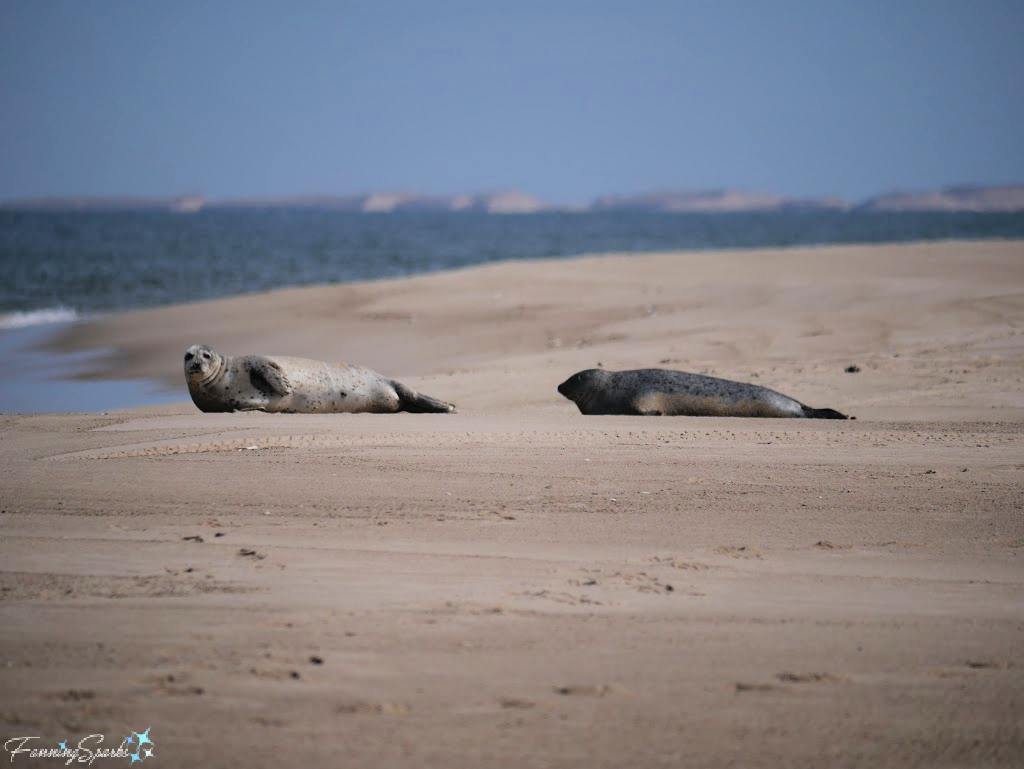
At first glance, these seals appeared motionless but careful observation revealed some interesting behaviors. For instance, the seals seemed to be watching us—turning their heads to follow our progress. They seemed especially drawn by bright-colored clothing.
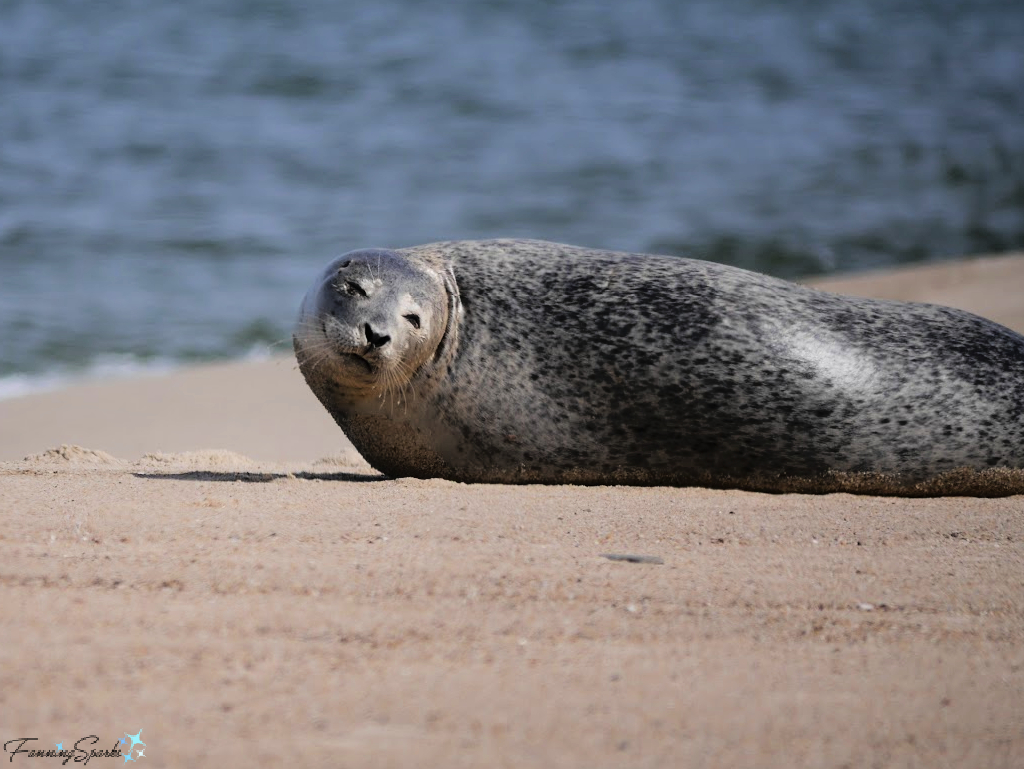
At one point, one of the seals pulled its flippers up into a surprising pose. I’ve since learned from the Sable Island Institute StoryMap that “except for the head and flippers, a seal’s body is well insulated with a thick layer of blubber. In the “banana” posture, commonly seen where seals are on the beach or in the swash zone, a seal keeps its flippers up out of the water… so body heat is conserved.”
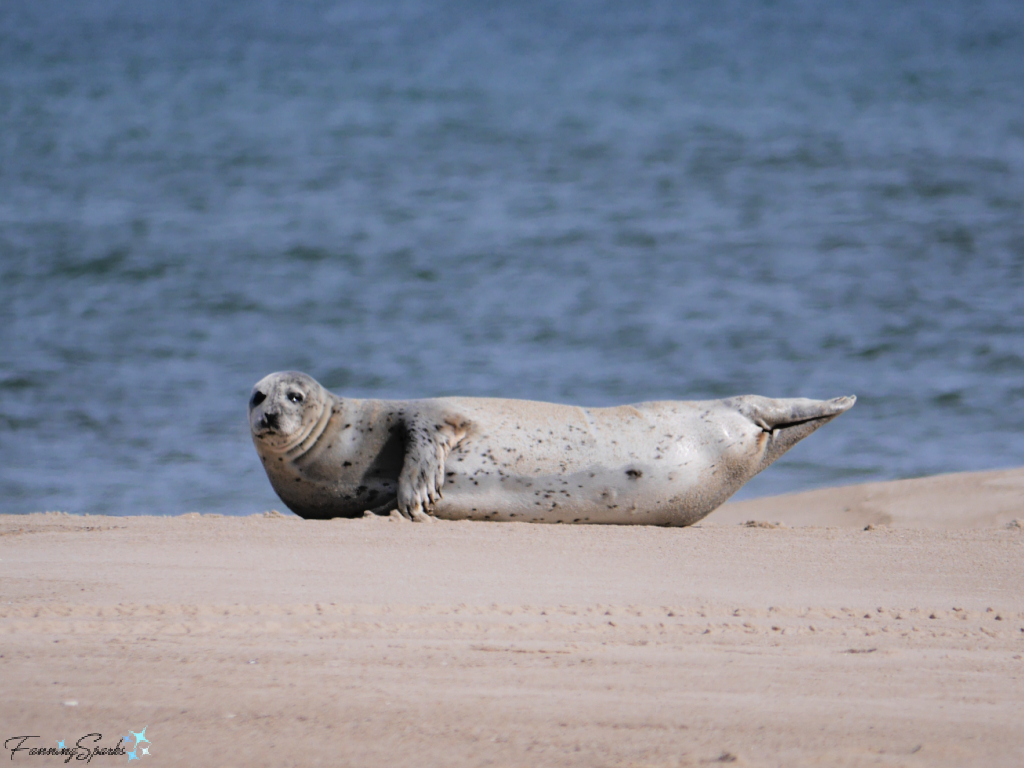
We also observed some interesting maneuvers with the its front flippers.
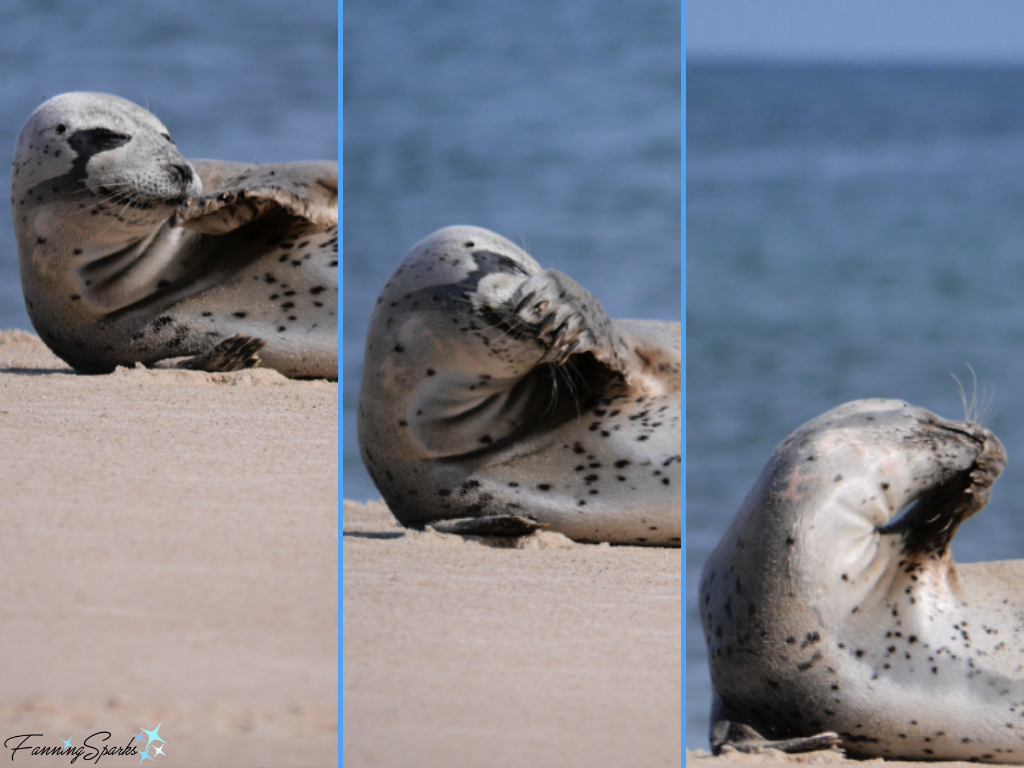
We got one last curious glance as we left the beach.
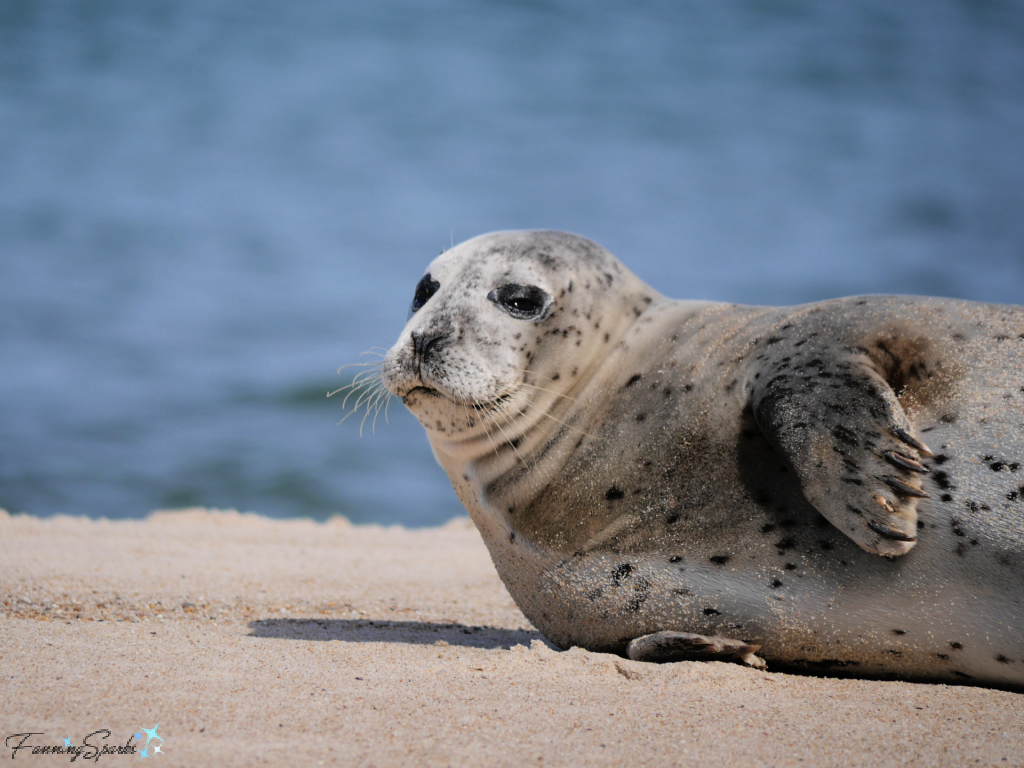
In addition to the beloved wild horses and abundant seal population, Sable Island hosts more than 350 species of birds. Sixteen of those species breed on Sable. Of particular note is the Ipswich Sparrow (Passerculus sandwichensis ssp. princeps) which breeds almost exclusively on Sable Island. Sadly, this little sparrow is ranked as a “Critically Imperiled Subspecies” by NatureServe meaning “At high risk of extinction or collapse due to restricted range, few populations or occurrences, steep declines, severe threats, or other factors.”
The Ipswich Sparrow is the subject of an ambitious, multi-year, demography study conducted by a collaborative effort with Parks Canada, Sable Island Institute, Nova Scotian universities and USA organizations. As explained on the Ipswich Sparrow Demography Project’s website, “Thanks to a distinctive race of sparrow with a unique breeding cycle, we can find out when a migratory bird faces its biggest risks, within each year and throughout its lifetime.” This website includes a very cool animation of actual birds migrating north, “From Virginia to Sable (as the sparrow flies)”, based on the “thousands of “pings” at radio towers as radio-tagged birds fly by”.
I was fortunate to capture these two Ipswich Sparrows perched on a dried wildflower head.
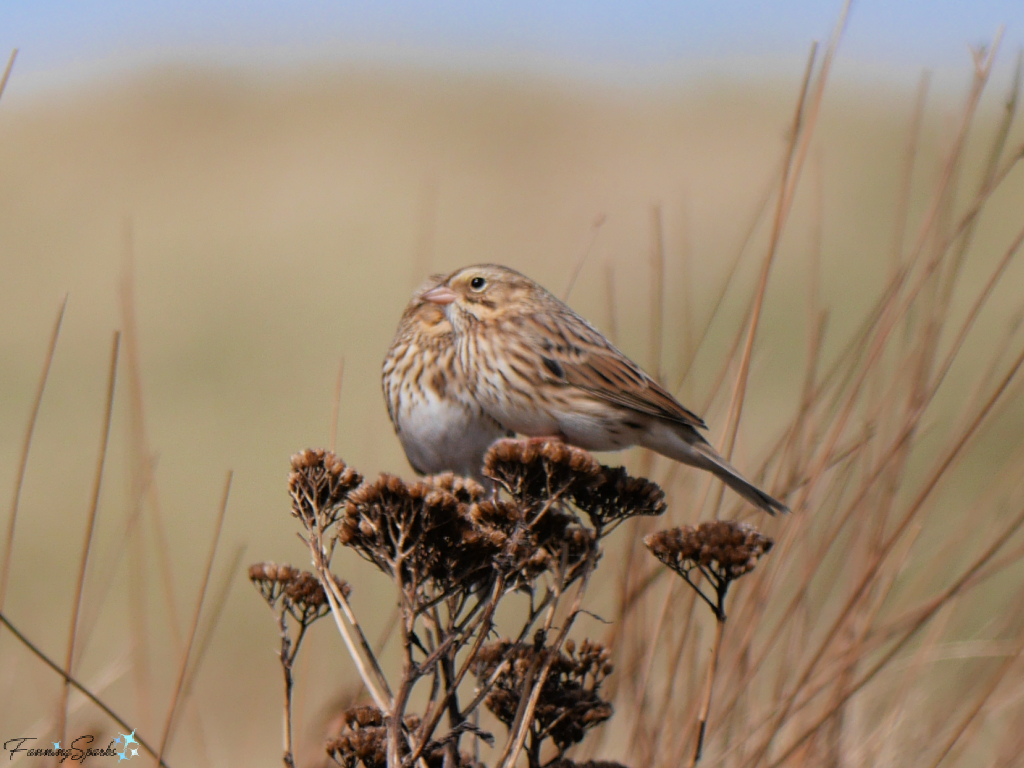
This is the second post, of two, about my once-in-a-lifetime experience visiting wild and remote Sable Island. Check out my previous post, 6 Fascinating Facts about Sable Island, for an overview of this remarkable island.
More Info
Sable Island is a small, remote island—approximately 42 km (26 miles) long and 1.3 km (.8 miles) across at its widest point—located 161 km (100 miles) off the shores of Nova Scotia, Canada.
In addition to my previous blog post, 6 Fascinating Facts about Sable Island, check out these resources to learn more about Sable Island:
. Parks Canada manages the Sable Island National Park Reserve. See the Parks Canada Sable Island website.
. The Sable Island Institute, a not-for-profit, multidisciplinary organization that conducts and supports Sable Island programs. See the Sable Island Institute website including their excellent virtual tour Exploring Sable Island, a StoryMap.
For resources focused on Sable Island horses, see:
. Canadian Encyclopedia – Sable Island Horses
. Wikipedia – Sable Island Horse
. Canadian Broadcasting Corporation (CBC) News articles: Sable Island a Day in the Life of a Horse Researcher and Sable Island the Wild Horses History and Future
See my previous blog post The Enduring Tale of Evangeline to learn more about the Acadians in Nova Scotia as depicted in the epic poem by Henry Wadsworth Longfellow.
The Ipswich Sparrow Demography Project website provides information about this fascinating research study. See the Ipswich Sparrow entry on the NatureServe website for information about its conservation status.
Our trip to Sable Island was organized and hosted by, Kattuk Expeditions, a Parks Canada licensed tour company. Fred and his team did a great job orchestrating our incredible adventure. See the Kattuk Expeditions website for information.
Today’s Takeaways
1. Consider visiting a natural park near you. Learn about the wildlife in the place you plan to visit.
2. Respect wildlife and stay safe by following the rules and regulations regarding wildlife at your destination.
3. Be patient and wait quietly, at a safe distance, to observe/ photograph wildlife.


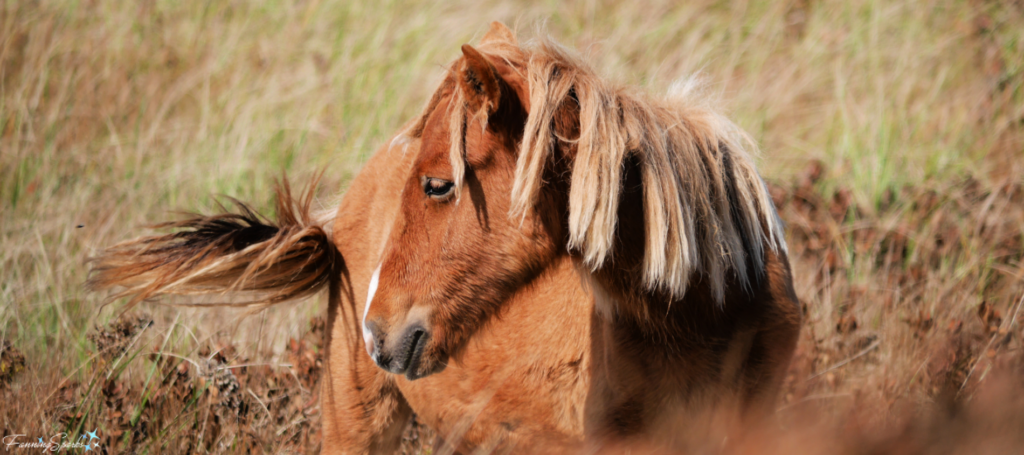


2 Comments
@Denise, Thank you. Sorry you weren’t able to join us. It was a great day. Peg
Beautiful Peggy !!